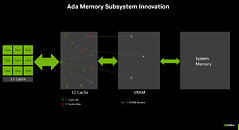T0@st
News Editor
- Joined
- Mar 7, 2023
- Messages
- 3,328 (3.92/day)
- Location
- South East, UK
| System Name | The TPU Typewriter |
|---|---|
| Processor | AMD Ryzen 5 5600 (non-X) |
| Motherboard | GIGABYTE B550M DS3H Micro ATX |
| Cooling | DeepCool AS500 |
| Memory | Kingston Fury Renegade RGB 32 GB (2 x 16 GB) DDR4-3600 CL16 |
| Video Card(s) | PowerColor Radeon RX 7800 XT 16 GB Hellhound OC |
| Storage | Samsung 980 Pro 1 TB M.2-2280 PCIe 4.0 X4 NVME SSD |
| Display(s) | Lenovo Legion Y27q-20 27" QHD IPS monitor |
| Case | GameMax Spark M-ATX (re-badged Jonsbo D30) |
| Audio Device(s) | FiiO K7 Desktop DAC/Amp + Philips Fidelio X3 headphones, or ARTTI T10 Planar IEMs |
| Power Supply | ADATA XPG CORE Reactor 650 W 80+ Gold ATX |
| Mouse | Roccat Kone Pro Air |
| Keyboard | Cooler Master MasterKeys Pro L |
| Software | Windows 10 64-bit Home Edition |
NVIDIA has recently revised its specification sheet for the upcoming GeForce RTX 4070 SUPER GPU—a small mistake was included in their review guide and marketing material. Team Green workers were likely in a rush to get everything ready for RTX 40xx SUPER range's official unveiling at CES 2024, so a typo here and there is not unexpected. The RTX 4070 SUPER's AD104 GPU configuration was advertised as offering a 20% core count upgrade over the vanilla RTX 4070 (non-SUPER), but detail sensitive sleuths were somewhat puzzled with the SUPER's L2 cache designation of 36 MB. Various 2023 leaks suggested that 48 MB was the correct value; representing a 33% jump up from the standard 4070's L2 pool. We must note that TPU's GPU database had the correct spec entry since day one.




View at TechPowerUp Main Site | Source




View at TechPowerUp Main Site | Source






